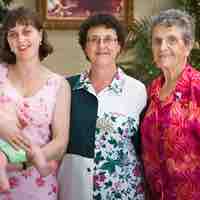Section 2
Demographic Factors to Consider
By Boundless

Since individuals of the same generation often share similar values, beliefs, and attitudes, age is an important variable to consider.
A speaker has an opportunity to address years of masculine and feminine gender role conditioning through the use of inclusive language.

The sexual orientation of your audience members should be taken into account when giving a speech.

Consider both the formal education and the self-directed learning of the members of your audience to adapt your speech content.

Understanding the religions in your audience will help you relate to the members and avoid excluding members of differing religions.

As society becomes more diverse, the speaker will find it useful to learn more about the cultures, races and ethnic groups in each audience.

Audience members who belong to the same group are likely to share values, beliefs, and attitudes with other members of the group.